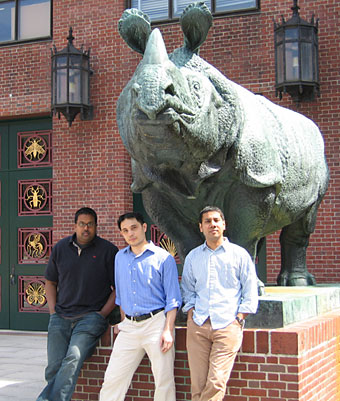Imagine a cocktail party, full of conversing people. As a group, these people love to talk, but for a good party their chatter should be neither too quiet nor too loud. They don’t like being silent because they are, after all, at a party and want to be heard. At the same time, they don’t want the chatter to become too loud, because communication would then be as inefficient as silence, as the information gets lost in the din. So, both the amount of talking and sensitivity of the listener are kept mutually adjusted at a nice equilibrium. A similar balance is maintained in neuronal circuits. Neurons are constantly engaged in a chatter of synaptic transmission and action-potential generation. If the neurons are electrically silent, they are non-functioning, and if they are too active, the circuit becomes epileptic and equally non-functional.
In the past decade, researchers have begun to describe a set of adaptive mechanisms that neurons possess to keep activity at an optimal range. Neurons that are taken to extremes of activity initiate compensatory changes in their synaptic properties, a phenomenon referred to as “synaptic homeostasis”. When action-potential generation is eliminated in cultured neurons with the addition of tetrodotoxin, a blocker of voltage-gated sodium channels, glutamatergic synapses, which are excitatory, become stronger, conceivably in an attempt to boost network activity. Meanwhile, inhibitory synapses (called GABAergic because of the neurotransmitter they use) adjust in the opposite but complementary direction. That is, in response to network silence, GABAergic synapses become weaker.
We in the Murthy lab decided to look into which features of activity are important for driving this type of synaptic plasticity. To continue with the cocktail partly analogy, is the level of chatter maintained by the individuals gauging the overall level of conversation going on in the room? Alternately, everyone at the party could simply monitor his/her own level of conversation – I seem to be not talking enough, so maybe I should listen harder to what others are saying to me, and even urge them to speak up. Similarly, for neural networks we can ask: does a neuron adjust its synaptic inputs based on the change in network activity, or based on its own level of activity?
Previous work in this lab by Juan Burrone (Burrone et al., 2002, Nature 420, 414-418) showed that glutamatergic synapses can be adjusted by the latter: Reducing the activity of single neurons was sufficient to induce changes in its glutamatergic inputs, even though the activity of the surrounding neurons continued to be normal. This result indicated that neurons are indeed sensitive to their individual activity level. In the current work, we tested whether or not changes in GABAergic synapses could also be triggered in such a cell-autonomous fashion. We found that GABAergic synapses, unlike glutamatergic ones, were not sensitive to single-cell activity reduction. They responded exclusively to a network-wide reduction in activity. We also found that the homeostatic changes in GABAergic synaptic strength involved changes in the amount of neurotransmitter packaged into the presynaptic vesicles. This novel mode of synaptic plasticity is not commonly seen at glutamatergic synapses. Taken together, these results show important distinctions in the way two major classes of synapses are modified in the brain.


